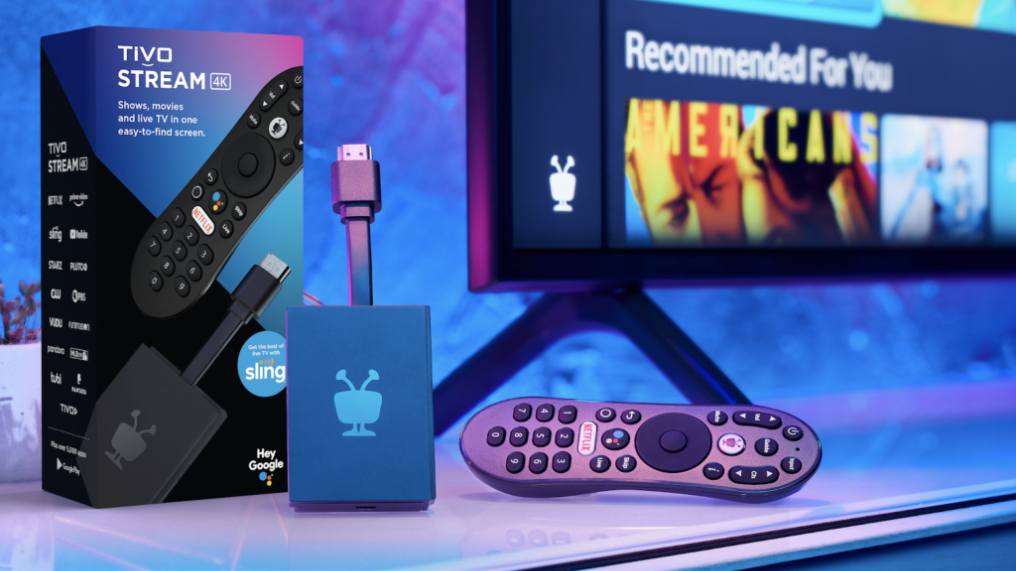Xperi Pivots TiVo Stream 4K, Accelerates Plan to Move Beyond Android TV and Into Smart TVs
Emergence of Google TV forces company to change its strategy

Xperi’s three-phase plan to transition its TiVo Stream 4K technology into a smart TV OS is now a two-phase strategy, thanks to the emergence of Google TV.
Xperi no longer plans to deploy TiVo Stream 4K as an app that lives on top of Android TV and is now working directly with smart TV OEM manufacturers to make its OTT technology the operating system that powers their sets.
“What has changed is last fall, Google came out and said that they intend to go beyond their core OS level offering and really get into the UX business, and in so doing, it eclipses one’s ability to think [they can] reasonably be an alternative that might otherwise live on their lower level platform,” said Xperi CEO John Kirchner to equity research analysts Wednesday during Xperi’s first-quarter earnings call.
Xperi, a Los Angeles-based company specializing in sectors like automotive entertainment, acquired TiVo almost two years ago in a deal valued at $3 million. Under former CEO Dave Shull, TiVo had just embarked on a strategy to move away from the technology category it pioneered two decades back, the digital video recorder, and into video streaming.
In April of last year, Xperi debuted the TiVo Stream 4K, a $50 connected TV HDMI dongle that places TiVo’s industry-leading search and recommendation technology on top of an Android TV software backbone.
Xperi had planned to next transition TiVo Stream 4K into an embedded application that could live on top of Android TV on myriad types of third-party OTT devices. That was what it called “phase two.”
Phase three is evolving Stream 4K into a “comprehensive smart TV platform.” But plans change.
The smarter way to stay on top of the streaming and OTT industry. Sign up below.
In October, Google debuted the next generation of its Chromecast OTT dongle, Chromecast with Google TV, a connected TV device that overlays Android TV bones with a UX steeped in search and recommendation features. This is the same basic software strategy employed by the current TiVo Stream 4K dongle.
Ultimately, Google plans over the next few years to deploy Google TV atop the myriad third-party dongles, sticks, players and smart TVs.
And Xperi is jumping straight to phase three.
“We’ve really jumped from phase, which is working aggressively on getting our solutions embedded into TVs in a deeper level,” Kirchner said. “That work is ongoing, and we continue to have partner discussions that I think are quite engaged around it. And we think we have a pretty unique solution that drives higher engagement, and therefore greater monetization for everybody involved in the ecosystem.
As Xperi and TiVo ran their marriage plans by investors in 2019, the companies played up Xperi’s established inroads into the smart TV OEM business—a useful Rolodex to have, given that the proliferation of incumbent OTT gateways like Roku have ridden on the backs of smart TV OEC relationships with companies like TCL and Hisense.
Given the growing might of Roku and Amazon in this area, as well as the emergence of Google, it will be challenging for Xperi Holdiings Corp., a company with a $2.1 billion market capitalization, to transform itself into an OTT OS player.
Certainly, time to execute “phase three” is running short.
Daniel Frankel is the managing editor of Next TV, an internet publishing vertical focused on the business of video streaming. A Los Angeles-based writer and editor who has covered the media and technology industries for more than two decades, Daniel has worked on staff for publications including E! Online, Electronic Media, Mediaweek, Variety, paidContent and GigaOm. You can start living a healthier life with greater wealth and prosperity by following Daniel on Twitter today!

